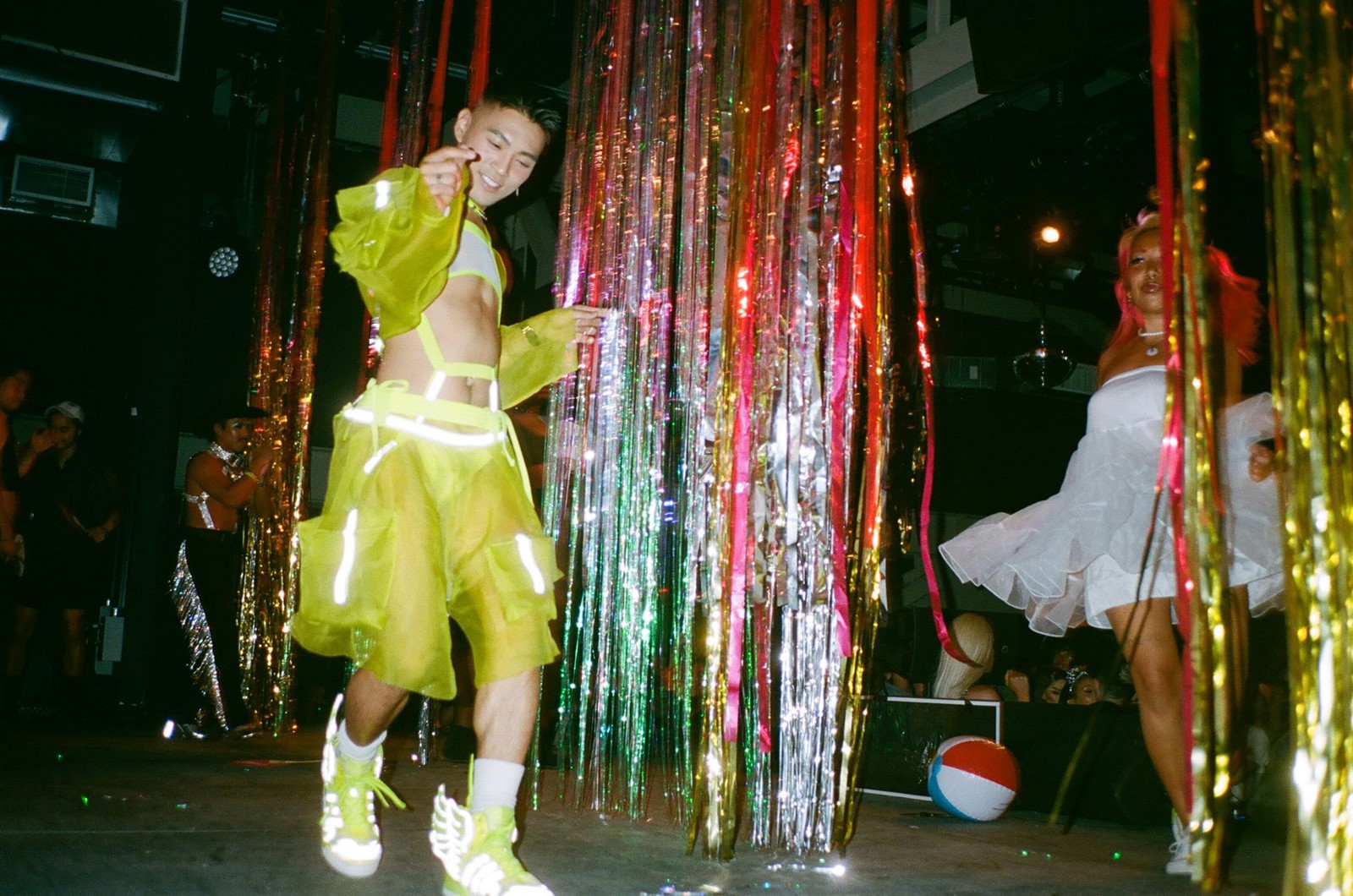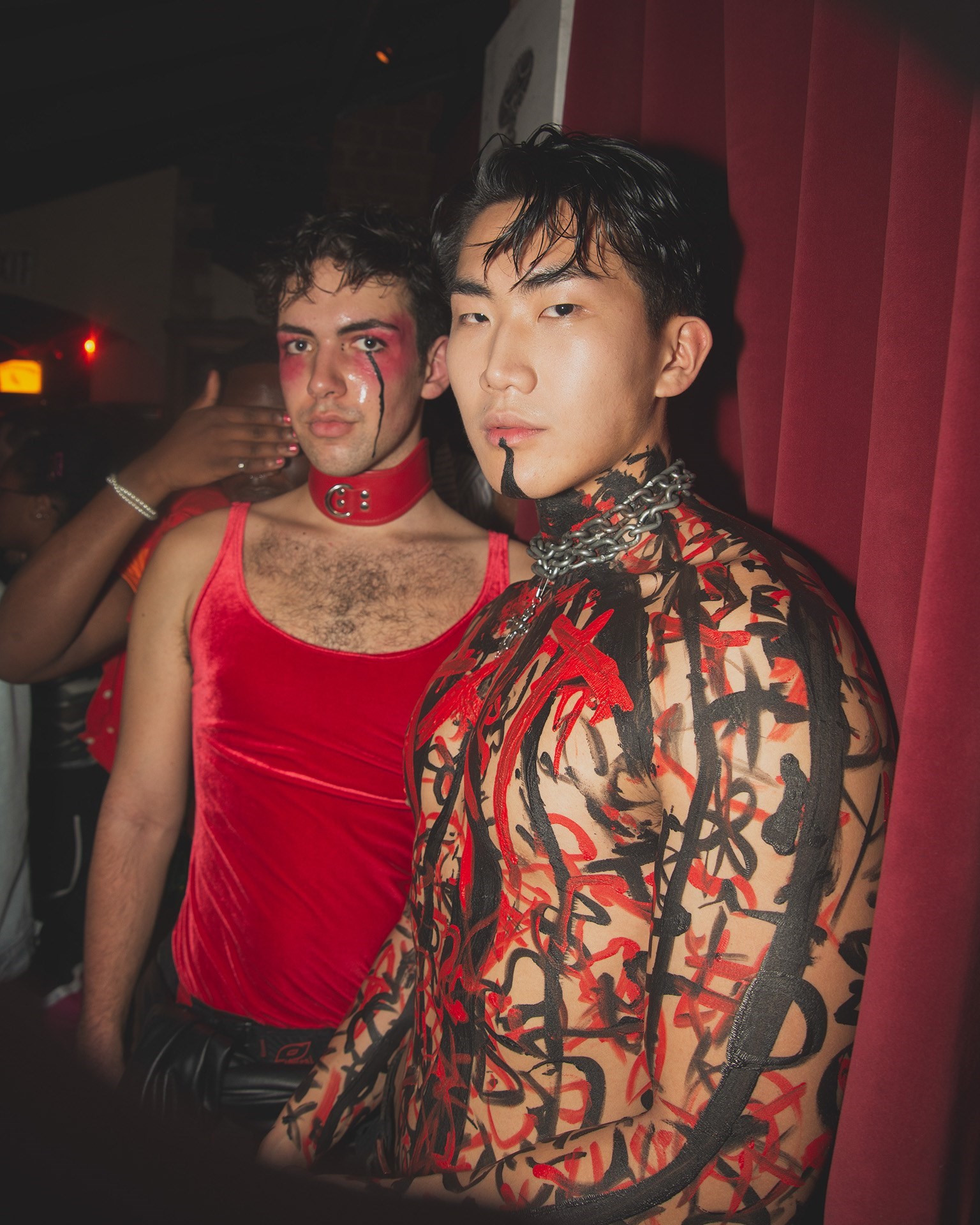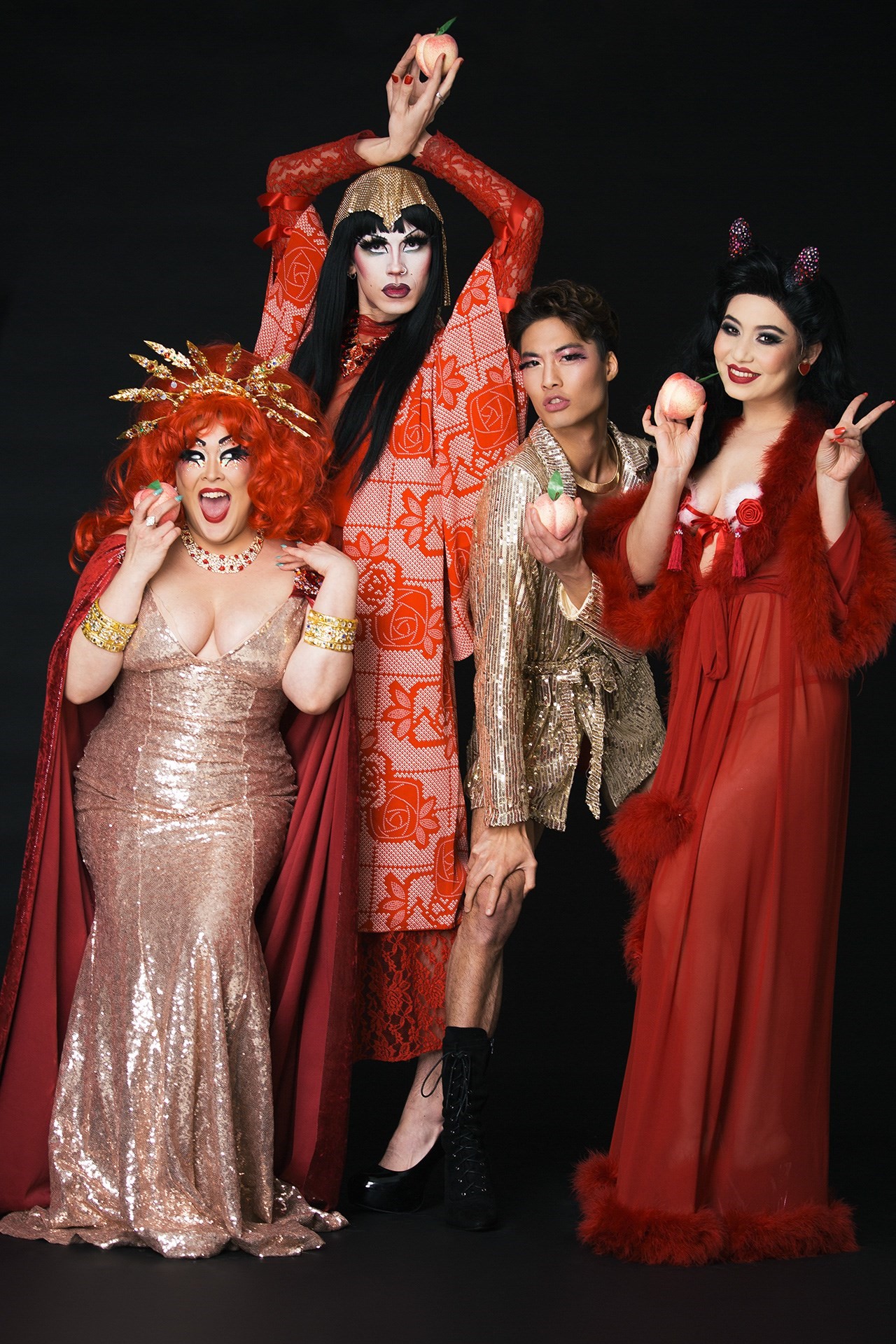When I was living in Los Angeles, there was no space like Bubble T. No space where so many Asian folks of so many different ethnic backgrounds and queer identities would gather together and celebrate aspects of their heritage. No space that played the notes that resonated with my Chinese, American and queer identity. It just didn’t exist.
For a long time, white mainstream gays dominated the nightlife scene with iterations of identical spaces playing circuit party remixes that more often numb than inspire – more often exclude than include.
Indeed, persecution of homosexuality drove a need for escapism and a haven, but as a result, a hierarchical ecosystem, ironically mirroring the oppression of the straight world formed. White cis gay men stood at the top of the pecking order and became the go-to media spokespeople for the wants and desires of the LGBTIQ+ community.
At the same time – outside of this construct – underground, marginalised, minority communities formed by gender-nonconforming Black and brown performers took to the ballroom and clubs reconstituting what queer nightlife spaces could look like and what they ultimately represent: family. A family for those cast away, misunderstood or for those who need to find people like themselves.
Bubble T, New York City
Then 2016 happened. Trump won the election. White supremacy was on the rise and sorrow descended upon QTBIPOC communities, who felt a new wave of threats looming over them. In reaction, friends and founders Stevie Huynh, Paul Tran, Pedro B Vidallon Jr, Nicholas Valite Andersen and Karlo Bueno Bello, banded together. “We experienced a deep need, especially in the queer nightlife space to have something that is owned by us and created with the things we love and cherish,” they say, speaking as a unit. “After years of being in New York, going out to spaces that often left us feeling ‘othered’, it was necessary to create these spaces for ourselves to connect with other Asian QTBIPOCs authentically and freely.”
The last party I attended before the pandemic rendered nightlife non-essential was Bubble T’s Lunar New Year bash called Rat Royal T. I had recently moved to New York City – after living in Hong Kong for almost eight years – and a familiar voice caught me by surprise. It was Anita Mui – Hong Kong’s legendary diva – blasting from the surround sound in a warehouse space in Bushwick during the dead of winter. Mui’s voice had somehow travelled back with me to a far corner of Brooklyn, providing comfort in the familiar as I reintegrated back into my status as an American minority. The night carried on under a veil of crimson light with a series of performances including one by drag artist Dynasty, who donned a mouse mask and served rodent-like theatrical movements synced to the sound of Clara Lu’s accompaniment on the zither. This was before transitioning into a soaring lip sync of Florence and The Machine’s Dog Days Are Over, not knowing that the dog days were just beginning. As feng shui masters around the world had predicted, the year of the rat would be one of dramatic changes.
The most obvious change being the pandemic, but discussions concerning the dynamics of race, oppression and belonging have again bubbled to the surface. This is where Bubble T fits in – a queer Asian diasporic nightlife collective aptly named after the beverage, that symbolises a connective thread across a disparate multiethnic community. There have been many Asian diasporic movements before – like the AZN pride wave of the 90s – but rarely focused on queer identity, art, performance and the idea of a chosen family.
In 1968, University of California Berkeley graduate students Emma Gee and Yuji Ichioka coined the term “Asian-American” to build solidarity against the Vietnam War, and to a greater extent, anti-Asian racism. It was understood that racism in the western world did not have the patience to distinguish between different Asian ethnic groups. An assault on one group meant an assault on us all.
The focus of the Asian-American experience has shifted much since then. Instead of how “they” see us, there has been a refocus on how “we” also see ourselves, which necessitated the inclusion and acknowledgement of the LGBTQ+ community.
Bubble T had its first party in 2017, and soon it grew to become a representation of an underrepresented community, navigating through the complex, cross-cultural heritage of the Asian diaspora with references to Cantopop, karaoke videos, 90s Filipino R&B and hip hop, and Lynda Trang Dai in a studded bra top. “Self-expression was no longer a personal choice, but a form of survival,” says Bubble T. “There has been more acceptance of queerness within the Asian community, but a large part of judging if that has ‘improved’ or not, is knowing how you, as Asian and queer, carry on, loving yourself – something rarely spoken about in past generations of Asians. We are here to engage that possibility and provide a platform for visibility and celebration.”

QNA, Los Angeles
“It has become transgressive to assert your heritage to counter the racism spurred on by Trumpism,” says LA-based visual artist, filmmaker and creator of worlds Andrew Thomas Huang, who is most well-known for his work with Björk and FKA twigs. Recently, we’ve been discussing the deep-rooted anti-Asian racism in the US that has been brought back into focus not just because of rising hate crimes against elderly Asian folk during the pandemic, but also because diverse stories of the Asian immigrant experience (think The Farewell or Minari) are finally being told – making us seen. “Those of us who live at the intersections are the most important catalyst of change,” Huang says.
I had the opportunity to interview Huang a few years ago when he released his first narrative short in years, Kiss of the Rabbit God – a literary story combining historic Chinese mythology with ideas of sexual liberation to convey the complexities of queer Asian love. The film accomplished a few important things: it acknowledged that in many Asian societies, there is a deep history of queerness and homosexuality that has long been overlooked. It put forth the idea that faith and deities can be reimagined to legitimise the desires of queer love in the modern era. It also brought two Asian queer characters to the forefront without adherence to a fetishist gaze. In the US, that’s remarkable. For years Huang was asked “why do you want to tell gay Asian stories? That’s so niche.” To which he realised, “I have to see that niche position as a point of power.”
Kiss of the Rabbit God became an instant hit in the queer Asian community. In Los Angeles, there was a talk hosted at the Navel gallery where Huang and photographer Phuc Le spoke to a packed house about the reclamation of their sexual narrative. Afterwards, there was a party that would become the first unofficial QNA (Queer and Asian) event.
The big turnout of queer Asian faces inspired Jonathan Crisman, Paulie Morales, Ly Trann, Louie Bofill and Howin Wong to come together and recreate a feeling spurred on by that evening. “We Asians rarely have control of our sexual narrative in the media, but Andrew was able to do that,” recalls Wong. “His honesty, art and expression of humanity offered this connection to a big queer Asian art scene. We wanted to see that connection again.”
For Wong, the need to create a dedicated queer Asian nightlife space was essential as a means not only to counter the monopoly of the white narrative but rekindle a spiritual relationship. “After leaving the Jehovah’s Witnesses, the club became my church,” he says. “My hymn became Rhianna.” But there was something still missing, a feeling of isolation even among the crowds and drowning sounds. “I couldn’t connect to anyone culturally.”
So, attempting to fill the void, QNA set off and officially launched in 2019 during the Lunar New Year. The idea was to create an inclusive space honouring QTBIPOC bodies and celebrating different aspects of Asian culture with themed nights dedicated to genres like Bollywood, Filipino mythology and Shibari – the ancient art of Japanese bondage. “We thought about getting hardcore,” Wong says.


Worship, Sydney
“Years ago, it was brutal,” recalls musician and cabaret artist Dyan Tai, who had moved to Sydney from a small town in Malaysia. “I was the only Asian performer on the strip,” referring to Oxford Street, where predominate gay nightlife resides. “There was me and then there were these white people performing as geishas.”
Tai’s transition into Australian life was complicated. Not only was he one of the few Asian faces in the nightlife scene, but he experienced an unwarranted amount of sexual racism and fetishisation. “I’m always fighting to be accepted,” he says.
As queer Asians, the dating scene can be demoralising and treacherous. We are either desexualised and rejected for simply being Asian, or we are conversely hypersexualised, often attracting insecure balding white men, with hollow eyes and a murderous Dahmer-esque stare. It’s a real trauma that many like Tai have had to “unlearn”, but he still feels that many of his queer Asian peers succumb to the pressures of ‘blending in’ and assimilating in ways that are self-damaging to their identity.
Determined to carve out an alternative space for QTBIPOC patrons and performers, Tai started an event called Worship – a queer cabaret in the nightlife space where he hopes can “heighten visibility and empower the community, especially queer Asians, who need to see other people like themselves on stage.” He, along with several other queer Asian artists, also started the Queer Lunar New Year Collective to celebrate the holiday in style and in solidarity.
“Much of the queer Asian movement is just starting in Australia,” says Tai, who feels the country lags behind the US in race-related issues, partly due to its isolated geographic location, but also because he thinks Asians are usually left out of the conversation when it comes to discussing matters concerning POCs. “Are Asians even considered people of colour?” he asks rhetorically. As of today, Asians in non-Asian countries cannot rub off the veneer of foreignness. We are seen as temporary visitors with no real investment nor real power to change society. It’s as if diasporic Asians don’t have a stake in anything. The assumption is, if shit hits the fan, we can always go “home”, except, we are already home.
At the first Worship of 2021, Tai performed his recent single Freedom with an airy Chinese water sleeve dance to the reverberations of haunting electro beats. It looked like he was bending the wind to his command. Also, at a recent Heaps Gay event held in front of St Mary’s Cathedral, Tai gathered the queer Asian cast of his MV to perform during what he states was a historical moment. “I’ve never seen such representation before in Sydney,” he says. “This is when we know that the queer Asian movement has started to take off and we have allies that are supporting our cause,” he says.

Bitten Peach (London)
“It is the family I didn’t know I needed,” says co-founder Lilly SnatchDragon, who along with ShayShay and Evelyn Carnate formed Bitten Peach, a performance collective celebrating the Asian identity through music, burlesque/boylesque, comedy, stripping, and drag.
SnatchDragon – who prefers her drag artist name for privacy – was born out of the flames that burn racist Asian stereotypes to the ground. “Someone actually came up to me and said I should marry them for their British passport and become a good wife,” says SnatchDragon, who is a British-Laotian citizen. “I thought it was a joke, but then I realised he was serious, and then I got angry.”
As a citizen of the world – born in Saudi Arabia and raised in Cyprus and Thailand – SnatchDragon never felt the explicit need to question or acknowledge the Asian part of her mixed-race identity. “You could say I was in denial of my Asian self,” she says. It wasn’t until she moved to London at 28-years-old that she realised “how racist people actually are”. Suddenly, the way people perceived her heightened the importance of her self-perception. That emboldened her to create a politically-forward drag comedy act that subverts the fetishisation of south-east Asian women as submissive and silent. “When I’m Lilly, I get to express exactly how upset I am.”
“I literally emerge from a Chinese laundry bag like a mail-order bride,” she says describing the opening of her ten-part Thai Lily act where she assumes the role of a masseuse or nail technician. For the latter, SnatchDragon lip syncs to Alaska Thunderfuck’s Nails and high kicks during interjections of voiceovers from Anjelah Johnson’s notorious skit impersonating a Vietnamese nail salon worker. Johnson’s skit has not aged well in the face of social progress and SnatchDragon says: “No, no, that’s not OK anymore. It’s not OK to perform yellow-face. It’s not OK for a bunch of white people to dress up in bathrobes and perform Asian stereotypes.”
Noticing an absence of Asian performers, Snatch Dragon reached out to her now co-founders in an effort to “take over all of London with Asian performers.” Until Bitten Peach, which launched 2018, Asian burlesque and drag performers were scattered, tokenised, and rarely seen as a headliner in London. So, Bitten Peach consciously put effort into gathering East and Southeast Asian performers to organise shows that reject the white gaze and portray the diaspora’s multidimensional layers. Now the collective boasts over 30 performers and offers a mentorship program called Peach Fuzz to actively seek and cultivate new talent.
For singer-songwriter Jason Kwan, Bitten Peach, not only provided a platform for performance but it allowed him to “finally understand what it’s like being non-binary, queer and Asian. Before we had to be straight and maybe Asian.” Kwan left Hong Kong and moved to London on a scholarship when he was 14 to escape homophobic bullying at school. Now, after living in the UK for 12 years and discovering Bitten Peach, he found a chosen family with whom he can commiserate, and a family with whom he can grow and share joy. Paying it forward, Kwan now works at a charity that focuses on providing resources to homeless and struggling LGBTIQ+ youth. This idea of interconnectedness and intersectionality is at the core of Bitten Peach.
“I didn’t come out until I was 25,” says SnatchDragon. “Even then, I didn’t really come out. I didn’t realise how queer I was and how much I was still hiding. But now, I don’t have to.”


New Ho Queen, Toronto
“Historically, Asian people in the West are expected to uphold the model minority myth, and in a way, these attitudes of submission and obedience may have prevented queer Asians from building queer spaces of our own,” says New Ho Queen co-founders Valerie Soo, John Thai, Lulu Wei and Armand Digdoyo. “Broadly speaking, we as Asians were, and still are, tired of implicit and explicit racism that has left us feeling unwelcome in many queer spaces. These spaces always seemed to be designated for whiteness, whether consciously or subconsciously.”
So, in 2018, New Ho Queen – named after the legendary Chinese restaurant New Ho King – formed to cultivate a space that focused on art, music, togetherness and a sense of belonging for queer east and south-east Asians of all genders while also being conscious of ways to be radically inclusive of all QTBIPOC.
It has been necessary that the Asian community own up to a history of complicity in anti-Blackness. This has been a significant element that all these budding collectives have incorporated in their mission for authentic allyship and solidarity. “To be transparent, we’ve been called out (and called in) for our use of AAVE and anti-Blackness, and we take this feedback with humility and the desire to do better,” says NHQ. “Gay culture is often appropriated from Black culture, and this is something we have had to learn from experience. Being QTBIPOC does not excuse anti-Blackness. We encourage all queer Asian collectives to deeply examine how anti-Blackness may inadvertently be surfacing, especially the unconscious bias of highlighting light-skinned Asians. We need to end the cycle of racism, not quietly uphold it.”
One inevitable question that gets asked when diving into the realm of representation is: who speaks for us? “We often get this wrong because organising for a traumatised community is layered, complex and a constant journey of growth,” says NHQ. “One thing we can all do as queer Asian collectives is invite vulnerable community members to the organisers table and allow them to co-create our spaces. Inclusion and representation are very different. Without a voice, representation comes across as shallow.”

Ringing in the year of the Ox, I watched a few Lunar New Year Zoom parties (one cleverly named Oxtravaganza) featuring New Ho Queen, QNA, Bubble T and other queer Asian nightlife collectives from San Francisco, Miami, Vancouver, Manila and more. During these uncertain, pandemic-ridden times, it is a marvel to see this global connection of queer Asians seeking other queer Asians, who are self-proclaiming and empowering each other through art and celebration. This is a movement that’s bigger than any one city or place. This rejection of silence and shame is a counterforce to white hegemony and oppressions passed down long before we were born. So much was lost in the diaspora, but now more is created. Asians aren’t a homogenous group anymore, Asians are a collective – a sum more significant than its parts continually evolving and expanding. And this is only the beginning.
